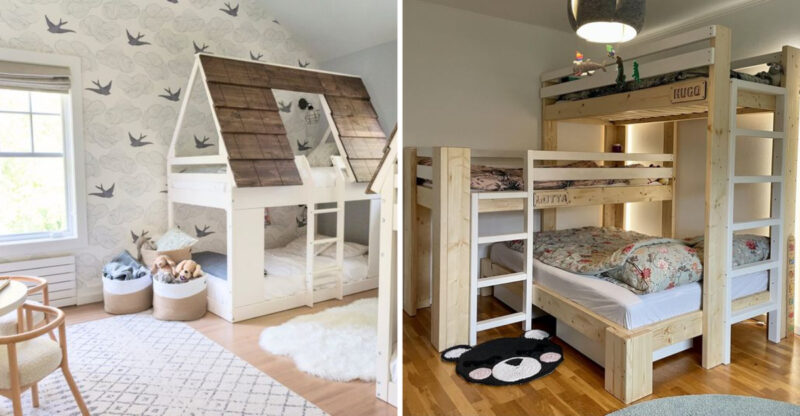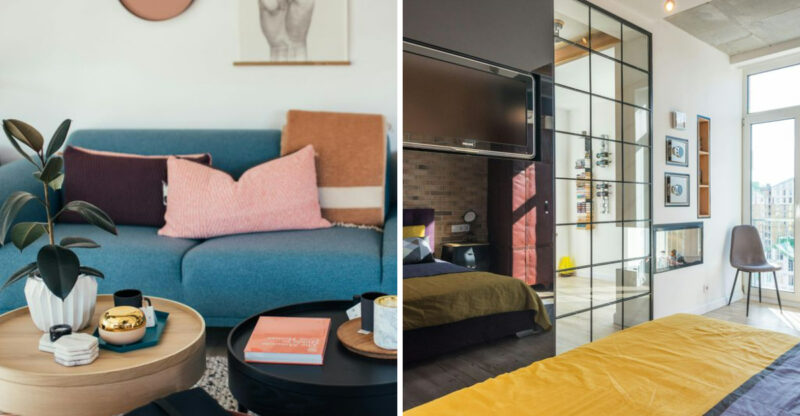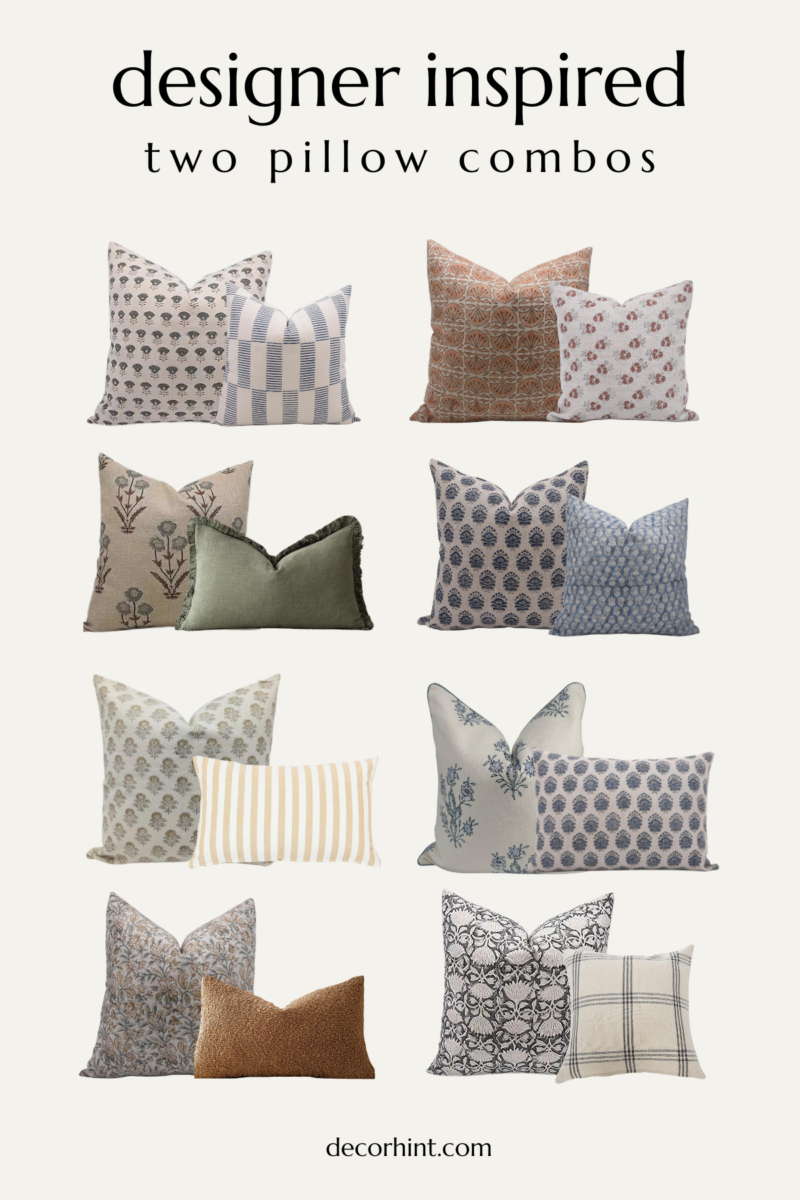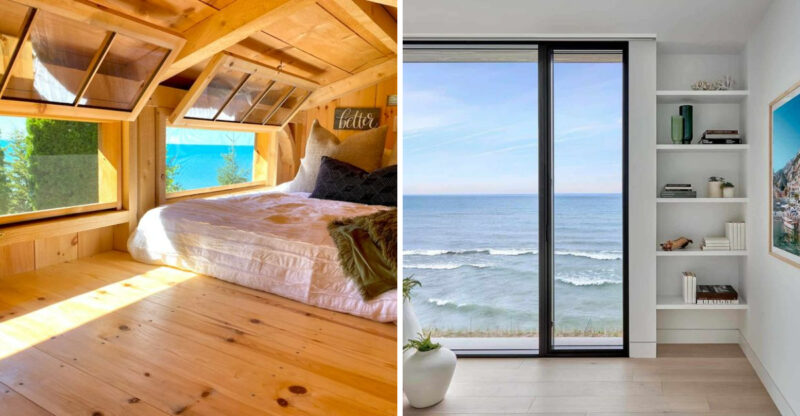10 Modern Decor Choices That Designers May Secretly Avoid
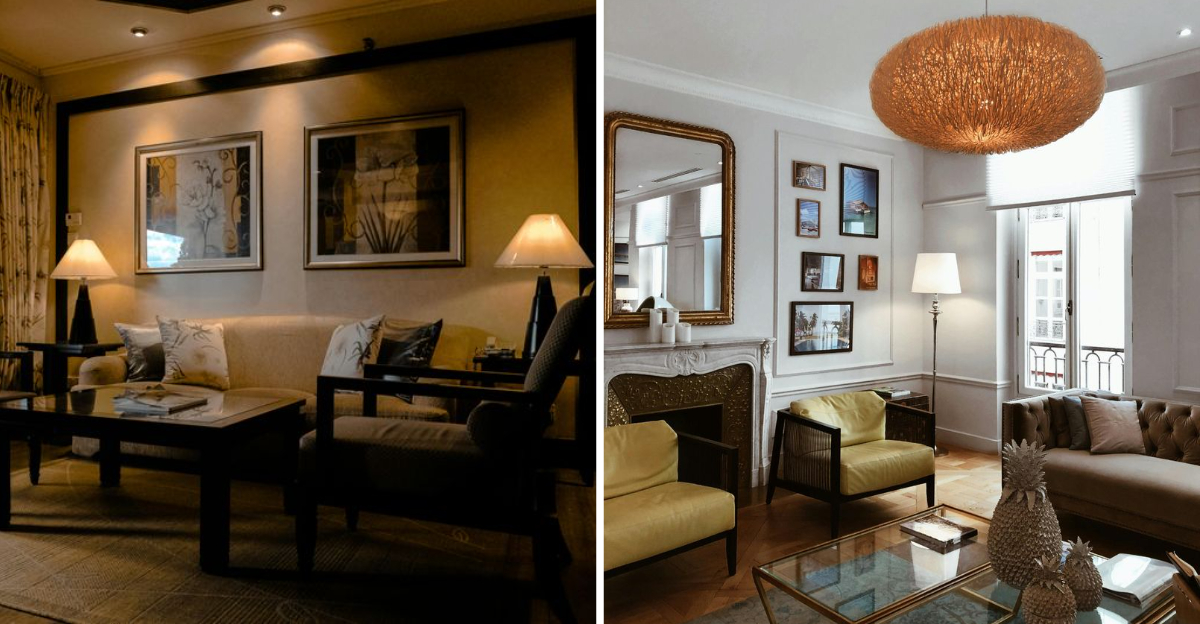
It’s easy to get swept up in trends that look stunning online, but what works on a screen doesn’t always translate to a lived-in space.
These eleven popular decor choices can be visually striking at first glance but often create practical or aesthetic challenges in real homes. Keep in mind that results can vary depending on your room’s size, lighting, and existing furnishings, so thoughtful adaptation is key.
1. Overly Shiny Metallic Finishes
Gold, silver, and brass finishes can transform ordinary objects into statement pieces until they don’t. Many designers quietly steer clients away from rooms drenched in metallic shine because they quickly look dated and cheap.
Fingerprints, dust, and scratches immediately show on these surfaces, creating maintenance nightmares for homeowners. Plus, too much reflection can make spaces feel cold and impersonal.
Instead of covering everything in metallic finishes, I recommend using them as subtle accents. A single brass lamp or picture frame adds elegance without overwhelming the space. The best designs incorporate metallics thoughtfully, not as the star of every surface.
2. Excessive Use of All-White Palettes
White-on-white interiors dominate Pinterest boards, but designers often avoid recommending them for practical living. These pristine spaces photograph beautifully yet become maintenance nightmares for families with children, pets, or anyone who actually lives in their home.
Beyond practicality issues, all-white rooms frequently feel sterile and unwelcoming. Without texture and subtle color variations, these spaces lack the visual interest that makes a room feel complete.
Most successful designers incorporate warm neutrals and textural elements to create depth. Even adding cream, beige, or soft gray breaks the clinical feeling while maintaining a clean aesthetic. Remember homes should feel lived-in, not like museum exhibits requiring protective booties.
3. Ultra-Minimalist Furniture Lacking Comfort
Those sleek, low-profile sofas with pencil-thin arms might look impressive in magazine spreads, but designers often avoid them when comfort matters. Ultra-minimalist furniture prioritizes visual impact over function, leaving guests perched uncomfortably during visits.
Hard angles, insufficient padding, and awkward heights make these pieces more like sculptures than usable furniture. I’ve watched clients struggle to get up from trendy concrete coffee tables and razor-thin dining chairs that look amazing but feel terrible.
Truly talented designers balance clean lines with ergonomic considerations. They understand that a beautiful room becomes truly exceptional when people can relax in it. Next time you’re furniture shopping, sit, lean, and lounge before committing your body will thank you.
4. Trendy Geometric Rugs That Overwhelm The Room
Bold geometric rugs can inject personality into spaces, yet designers frequently steer clear of the loudest patterns. When chevrons, diamonds, or hexagons dominate the floor, they compete with everything else in the room.
These eye-catching rugs quickly become visual noise, making the space feel smaller and more chaotic. What’s worse, many trendy patterns date themselves rapidly, meaning that investment piece might scream “2023” just months after purchase.
If you love geometric patterns, consider smaller rugs in less trafficked areas or subtler versions with tone-on-tone designs. Alternatively, use them in rooms with minimal other patterns and simple furniture. The floor shouldn’t be screaming for attention when you’re trying to relax or entertain.
5. LED Strip Lighting In Every Corner
TikTok and Instagram have popularized LED strip lights in bedrooms, behind TVs, and under kitchen cabinets. Yet designers quietly avoid this trend when creating sophisticated spaces. The harsh, often blue-tinted glow creates an atmosphere more fitting for a nightclub than a home.
Cheap LED installations frequently show individual light dots rather than a smooth wash of illumination. They collect dust, peel from surfaces over time, and create unnatural shadows that flatten a room’s dimensions.
Quality lighting design uses varied sources at different heights to create depth and ambiance. If you appreciate the modern look of LED lighting, invest in professional-grade products with diffusers, warm color temperatures, and strategic placement. Good lighting should enhance a room without announcing itself as the main feature.
6. Open Shelving With Cluttered Displays
Open kitchen shelving continues appearing in design magazines, but many designers privately discourage clients from adopting this impractical trend. Reality check: unless you’re willing to curate displays constantly, these shelves quickly become cluttered catchalls collecting cooking grease and dust.
Most households don’t own enough visually consistent dishware to create the harmonious displays seen in styled photos. Everyday items like plastic sippy cups, mismatched mugs, and food storage containers look chaotic when exposed.
Though I appreciate the airy feeling open shelving can create, I recommend limiting it to small areas featuring your most attractive items. Consider closed storage for the majority of kitchen items, perhaps with glass-front cabinets as a compromise. This approach maintains visual interest while keeping clutter and cleaning requirements under control.
7. Inflated Statement Art Pieces That Dominate Space
Massive abstract canvases and oversized prints make dramatic statements, but designers often avoid recommending art that overwhelms a room. When artwork demands too much attention, it creates visual imbalance rather than enhancing the space.
These domineering pieces frequently force furniture arrangements into awkward configurations just to accommodate their scale. Furthermore, statement art that follows current trends (like certain typography or color schemes) can quickly feel dated as design preferences evolve.
Art should complement your space rather than commandeer it. Consider creating gallery walls with smaller, meaningful pieces or selecting medium-sized artwork that relates proportionally to your furniture. The best interiors achieve harmony between all elements no single component should shout over the others.
8. Overuse Of Mirrored Surfaces
Mirrored furniture enjoyed popularity during the 2010s, but designers now quietly steer clients away from excessive reflective surfaces. Mirrored coffee tables, consoles, and nightstands quickly become smudged showcases for fingerprints and dust, requiring constant maintenance.
Beyond practical concerns, too many mirrors create visual confusion, bouncing light and reflections in disorienting ways. They can make spaces feel colder and less inviting, despite their intended purpose of creating illusions of space.
If you appreciate how mirrors brighten rooms, consider using them more strategically a single statement mirror above a console or a thoughtfully placed wall mirror to reflect natural light. Mixing materials creates more visual interest than rooms where everything reflects everything else. The goal should be elegant enhancement, not a house of mirrors effect.
9. Monochromatic Furniture Sets With No Texture
Matching furniture sets in identical colors and materials might seem like an easy decorating solution, but designers typically avoid this approach. Living rooms featuring the same flat fabric across every seating piece create a showroom effect rather than a personalized space.
Without textural variation, monochromatic rooms fall flat visually and feel one-dimensional. Your eyes need somewhere to land and explore, which identical surfaces fail to provide.
Professional designers mix complementary pieces instead of perfect matches. Try pairing a leather sofa with velvet accent chairs, or introducing contrast through pillows, throws, and varied wood tones. This approach creates depth while still maintaining cohesion. The most inviting spaces tell stories through thoughtful combinations, not catalog-perfect matching sets.
10. Synthetic Faux Plants That Look Fake
Artificial greenery promises maintenance-free decorating, yet designers typically avoid the obviously fake varieties. Those plastic fiddle leaf figs and synthetic succulents might seem convenient, but they often collect dust while contributing a lifeless energy to spaces.
Low-quality faux plants with unrealistic coloring, plastic-looking leaves, or visible wire stems immediately signal artificiality. They’ve become such a design cliché that they actually date a space rather than enhancing it.
If maintaining real plants seems daunting, consider investing in high-quality artificial options with natural variations and textures. Alternatively, focus on low-maintenance live plants like snake plants, pothos, or ZZ plants that thrive with minimal attention. Living elements bring irreplaceable energy to interiors that even the most expensive faux versions simply cannot replicate.

